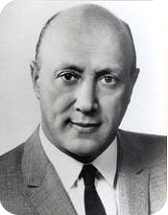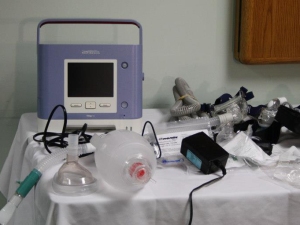 La version française suit.
La version française suit.
Last year, a new educational venture was held with the support of Muscular Dystrophy Canada. In partnership with Holland Bloorview and Sick Kids this creation was a family day for those supporting people living with Spinal Muscular Atrophy (SMA); these included children, young adults and adults, as well as their families and caregivers. Dr. Reshma Amin explains how the Spinal Muscular Atrophy (SMA) Family Day came about:
“I work in the Complex Respiratory Care clinic at The Hospital for Sick Children along with Dr Theo Moraes, Cathy Daniels NP, Faiza Syed RRT and Ellie Lathrop SW. Our team follows children dependent on respiratory technology (eg BiPAP and invasive ventilation,) many of whom have neuromuscular disorders such as Spinal Muscular Atrophy. Many of these children are often jointly followed at Holland Bloorview Rehabilitation Hospital for their neuromuscular care by Dr. Laura McAdam, the co-chair of this event, and her team. In clinic one day, while we were discussing transition to an adult healthcare center, an adolescent mentioned that he wanted to go to university and that he would love to be able to talk to another young adult with SMA that was successfully attending university. This got us thinking that we should organize a family educational event to facilitate kids with SMA being able to talk to other kids with SMA about ‘real life’ issues.”
Over 100 individuals (a full house) attended the event – most from the Greater Toronto Area, but participants from Thunder Bay, Ontario and New Brunswick were also present. The goal for the day? “To increase awareness about Spinal Muscular Atrophy in the community and to further educate caregivers, and children affected by SMA,” says Dr. Amin. “More specifically we wanted to increase the knowledge of families and children surrounding the medical, and psychosocial impact of SMA. We wanted to provide a venue in which we could foster supportive relationships between affected families. Lastly, we wanted the children and their families to learn of and appreciate the current scientific research activities that are ongoing for SMA.”
The day consisted of listening to many speakers, and participating in discussions and networking opportunities:
“Our key speakers are internationally renowned for their work with Spinal Muscular Atrophy. Dr. John Bach, a Professor of Physical Medicine and Rehabilitation from University Hospital, Newark, New Jersey, who has unparalleled clinical experience with those affected by this disorder, provided us with a provocative overview of the respiratory management of SMA. Brian Weaver, MS, RRT-NPS, RPFT, a respiratory therapist and Department Head at Kimble Medical Center, Newark, New Jersey, provided a practical review of the respiratory complications and the role of respiratory technology for children with SMA. Dr. Alex Mackenzie, a clinician-scientist from the Children’s Hospital of Eastern Ontario provided a high level review of SMA research and what clinical trials for children with SMA are current and planned. There were many other speakers including Tracy Lacey, chair of Fight SMA Canada, her husband Shawn and their daughter Tori, who has been diagnosed with SMA, provided a practical overview of ‘living with a child with SMA’ from needed home modifications, to school considerations. Dr. Adam Rapoport, the Medical Director of the Pediatric Advanced Care Team at SickKids informed families of the support services their team is able to provide to their children and families. Karen Dunbar, Services Specialist for Ontario and Nunavut from Muscular Dystrophy Canada, provided a pragmatic, and informative overview of the services and supports provided by the organization to children and their families with SMA. Dr. Laura McAdam, reviewed the Canadian Neuromuscular Disease Registry, established with the aim of helping clinicians and scientists improve clinical care of children with neuromuscular disease. There were also sessions focused on caring for a child with a chronic disease, increasing independence of adolescents with chronic disease as well as a break out session just for teenagers with SMA.”
Angela McGonigal, whose son Owen is affected by SMA, thought that the day had many great aspects including the health information shared, and the opportunity to establish networks and bonds with others in the same situation.
“Brian Weaver is a Respiratory Therapist who worked closely with Dr. Bach. He is a strong proponent of cough assist machines for SMA patients. He advised that when SMA kids are sick, they can utilize the cough assist machine every 3 hours during the day,” remembers Angela. “He recommends avoiding oxygen therapy as it masks ventilation issues such as secretions. He encourages chest therapy and recommends having the torso higher than the head to facilitate drainage.”
Muscular dystrophy Canada’s very own Services Specialist for Ontario and Nunavut, Karen Dunbar’s information was also very helpful. “She provided an overview of the home renovation funding and the equipment program and the event was well attended by families, doctors, therapists, nurses, social workers and others involved in SMA patient care. It was a great opportunity to learn, reflect and connect,” says Angela.
Dr. Amin also heard high praises from attendees, “One participant told me they felt ‘informed, inspired and connected.’ At the end of the day, we were also asked, ‘When are you going to have this next year?’”
Everyone who attended, from clients, parents, caregivers and medical professionals, all learned new things and made new connections. Dr. Amin had one particular memory stand out: “At the end of the day, we had a panel discussion led by adolescents and young adults with Spinal Muscular Atrophy. The audience was able to ask these individuals questions, and the responses were insightful and inspiring. One young adult with SMA was asked, ‘What is the one thing you would want to change in life if you were able?’ Her response was to be able to change the way people looked at her in a wheelchair. She hoped for a world with an increasing acceptance of children who were different. Her words resonated with everybody who was in the room. As healthcare providers, this is one goal we need to help work towards achieving for these children.”
“We hope that the attendees came away with an increase in knowledge regarding the respiratory management and complications of a child with SMA,” says Dr. Amin. “We also wanted to increase the awareness of the effect of having a child with SMA has on the family, specifically the social and psychosocial consequences of the condition at life’s many transition points. We also hope that we were able to break down barriers and foster open discussions between health care professionals, caregivers, and children both at the event and in the future. Of paramount importance is our hope that we were able to promote a support network for families with children with SMA. We also wanted to fully inform families about the registry as well as other research in SMA in order that they may participate in research if they wish to do so.”
The full house and outstanding feedback from attendees highlights the importance of partnerships between hospitals, care facilities, research centres and not-for-profit organizations, and why sharing information and resources – not only from a research standpoint, but also in terms of services – is so vital to the care of those with neuromuscular disorders. “The Hospital for Sick Children, Holland Bloorview Rehabilitation Hospital, and Muscular Dystrophy Canada all strive to provide better patient centered care to the children and their families,” Dr. Amin explains. “Strong partnerships are essential across hospitals and NFPs to facilitate transitions from hospital to home as well as to develop and support these families in their communities,” says Dr. Amin. “For example, the funding support of Muscular Dystrophy Canada towards respiratory technology facilitates the purchase of mechanical insufflator-exsufflators (cough assists) for our patients. This improves their overall pulmonary health and helps to keep these children in school and out of hospital.”
Of course, that is everyone’s ultimate goal.
________________________
The Spinal Muscular Atrophy Family Education Day was hosted by SickKids Hospital and Holland Bloorview Rehabilitation Hospital. This event was made possible by the generous support of Muscular Dystrophy Canada, the SickKids Foundation, Fight SMA Canada and Lifetronics.
For more information on SMA and other neuromuscular disorders, please click here. To learn more about programs offered by Muscular Dystrophy Canada, please contact a Services Specialist in your region.
To learn more about the Canadian Neuromuscular Disease Registry, click here.
_______________________________________________________________
Partenariats en action
 L’année dernière, une nouvelle initiative éducationnelle s’est tenue grâce au soutien de Dystrophie musculaire Canada. En collaboration avec deux hôpitaux pour enfants de Toronto, le Holland Bloorview et le SickKids, cette initiative a pris la forme d’une journée familiale pour les enfants, jeunes adultes et adultes atteints d’amyotrophie spinale (AS) ainsi que pour leurs parents et aidants. La Dre Reshma Amin explique comment l’idée de cette journée a vu le jour.
L’année dernière, une nouvelle initiative éducationnelle s’est tenue grâce au soutien de Dystrophie musculaire Canada. En collaboration avec deux hôpitaux pour enfants de Toronto, le Holland Bloorview et le SickKids, cette initiative a pris la forme d’une journée familiale pour les enfants, jeunes adultes et adultes atteints d’amyotrophie spinale (AS) ainsi que pour leurs parents et aidants. La Dre Reshma Amin explique comment l’idée de cette journée a vu le jour.
« Je travaille à la clinique de soins respiratoires complexes du Hospital for Sick Children avec le Dr Theo Moraes, Cathy Daniels, infirmière praticienne, Faiza Syed, inhalothérapeute, et Ellie Lathrop, travailleuse sociale. Notre équipe assure le suivi d’enfants qui dépendent des technologies respiratoires telles que les appareils à deux niveaux de pression positive et la ventilation invasive. Plusieurs de ces enfants ont une maladie neuromusculaire comme l’amyotrophie spinale et sont souvent suivis en même temps au Holland Bloorview Rehabilitation Hospital pour leurs soins neuromusculaires par la Dre Laura McAdam, coprésidente de cet événement, et son équipe. Un jour, à la clinique, pendant que nous discutions de la transition vers les soins de santé pour adultes, un adolescent a mentionné qu’il voulait aller à l’université et qu’il aimerait bien pouvoir parler à un autre jeune adulte atteint d’AS déjà à l’université. Ceci nous a fait penser qu’il serait intéressant d’organiser une activité familiale éducationnelle pour faciliter les échanges entre enfants atteints d’AS et leur permettre de parler de questions touchant « la vraie vie ».
L’activité a fait salle comble, avec une centaine de participants, la plupart de la région du Grand Toronto mais aussi de Thunder Bay (ON) et du Nouveau-Brunswick. L’objectif de la journée? « Sensibiliser davantage le milieu à l’amyotrophie spinale et mieux informer les aidants et les enfants atteints d’AS », explique la Dre Amin. « Nous voulions plus particulièrement rehausser les connaissances des familles et des enfants en ce qui concerne les impacts médicaux et psychosociaux de la maladie. Nous voulions aussi offrir un lieu de rencontre permettant de favoriser des relations de soutien entre les familles touchées. Enfin, nous voulions que les enfants et leur famille soit informés des recherches scientifiques en cours sur l’amyotrophie spinale. »
La journée a consisté à écouter de nombreux conférenciers, à participer à des discussions et à réseauter.
« Nos conférenciers sont reconnus internationalement pour leur travail dans le domaine de l’amyotrophie spinale. Le Dr John Bach, professeur de physiatrie et de réadaptation à l’University Hospital de Newark, au New Jersey, qui possède une expérience sans pareille des personnes atteintes d’AS, a fait un survol de la gestion respiratoire de l’AS qui avait de quoi faire réfléchir. Brian Weaver, MS, RRT-NPS, RPFT, inhalothérapeute et chef de département du Kimble Medical Center de Newark au New Jersey, a présenté une revue pratique des complications respiratoires et du rôle des technologies respiratoires pour les enfants atteints d’AS. Le Dr Alex Mackenzie, scientifique et clinicien du Children’s Hospital of Eastern Ontario, a offert une revue de haut niveau de la recherche sur l’amyotrophie spinale et des essais cliniques pour enfants qui en sont atteints, présentement en cours et prévus. Il y avait beaucoup d’autres conférenciers, dont Tracy Lacey, président de Fight SMA Canada, son mari Shawn et leur fille Tori, atteinte d’AS, qui ont donné un aperçu pratique de la vie avec un enfant atteint d’AS, depuis les modifications requises au domicile jusqu’aux questions touchant la scolarisation. Le Dr Adam Rapoport, directeur médical de l’équipe de soins pédiatriques avancés du SickKids Hospital a renseigné les familles sur les services de soutien que l’hôpital offre aux enfants et aux familles. Karen Dunbar, spécialiste des services de Dystrophie musculaire Canada pour l’Ontario et le Nunavut, a offert un survol pragmatique et informatif des services et mesures de soutien que son organisme offre aux enfants et familles touchées par l’AS. La Dr Laura McAdam a parlé pour sa part du Canadian Neuromuscular Disease Registry, un registre de patients établi en vue d’aider les cliniciens et les scientifiques à améliorer les soins cliniques des enfants atteints de maladies neuromusculaires. Il y a aussi eu des sessions sur la façon de s’occuper d’un enfant atteint d’une maladie chronique, d’améliorer l’autonomie des adolescents qui ont une maladie chronique ainsi qu’un atelier réservé aux adolescents ayant l’AS. »
De l’avis d’Angela McGonigal, dont le fils, Owen, a l’amyotrophie spinale, la journée comportait de nombreux aspects intéressants, notamment le partage d’information sur la santé et la possibilité de réseauter avec des gens qui sont dans la même situation.
« Brian Weaver est un inhalothérapeute qui a travaillé étroitement avec le Dr Bach. C’est un ardent défenseur du recours aux appareils d’assistance à la toux pour les patients atteints d’AS. Lorsqu’un enfant AS est malade, il conseille d’utiliser l’appareil d’assistance à la toux aux trois heures pendant la journée, rappelle Angela. Il recommande aussi d’éviter l’oxygénothérapie puisqu’elle masque les problèmes de ventilation tels que les sécrétions. Il encourage la physiothérapie respiratoire et recommande de positionner le torse plus haut que la tête pour faciliter le drainage. »
L’information fournie par Karen Dunbar, la spécialiste des services de Dystrophie musculaire Canada pour l’Ontario et le Nunavut, a aussi été très utile. « Elle a parlé du financement disponible pour l’adaptation du domicile et du programme d’aides techniques. Les familles, médecins, thérapeutes, infirmières, travailleurs sociaux et autres personnes concernées par le suivi des patients AS étaient tous fort bien représentés. Ce fut une excellente occasion de s’informer, de réfléchir et de réseauter », ajoute Mme McGonigal.
La Dre Amin a aussi entendu des commentaires très positifs chez les participants. « L’un d’eux m’a dit qu’il se sentait informé, inspiré et connecté. À la fin de la journée, on nous a aussi demandé quand se tiendrait cette activité l’année prochaine. »
Clients, parents, aidants et professionnels médicaux, tous les participants ont appris quelque chose de neuf et rencontré des gens intéressants. Un événement a plus particulièrement marqué la Dre Amin « C’était à la fin de la journée, lors d’un débat réunissant un panel d’adolescents et de jeunes adultes atteints d’amyotrophie spinale. Le public pouvait leur poser des questions et leurs réponses étaient éclairées et inspirantes. On a demandé à une jeune adulte atteinte Quelle est la chose que vous voudriez changer dans votre vie si vous le pouviez? Sa réponse : changer la façon dont les gens la regardent dans son fauteuil roulant. Elle rêve d’un monde où les enfants qui sont différents seraient mieux acceptés. Ses mots ont trouvé un écho chez tous ceux qui étaient présents. En tant que professionnel de la santé, voilà un objectif que nous devons tous contribuer à réaliser, pour le bien de ces enfants. »
« Nous espérons que les participants sont repartis avec de meilleures connaissances au sujet des soins et des complications respiratoires chez les enfants atteints d’amyotrophie spinale », ajoute la Dre Amin. « Nous voulions aussi les sensibiliser davantage à l’impact qu’a un enfant AS sur la famille, et plus particulièrement aux conséquences sociales et psychosociales de la maladie au moment des différentes transitions qui surviennent au cours d’une vie. Nous espérons aussi avoir favorisé une discussion plus ouverte entre les professionnels de la santé, les aidants et les enfants, lors de cette rencontre mais aussi pour l’avenir. Surtout, nous espérons avoir encouragé l’établissement et le renforcement d’un réseau de soutien pour les familles des enfants atteints d’AS. Enfin, nous voulions fournir aux familles une information complète sur le registre et sur d’autres recherches sur la maladie afin qu’ils puissent choisir d’y participer ou non en toute connaissance de cause. »
La très forte participation et les commentaires unanimement positifs de cette journée soulignent l’importance de la collaboration entre les hôpitaux, les centres de soins, les centres de recherche et les organismes sans but lucratif et illustre l’importance pour le suivi des personnes qui vivent avec une maladie neuromusculaire de la mise en commun de l’information et des ressources, non seulement pour ce qui est de la recherche mais aussi en termes de services. « Qu’il s’agisse du Hospital for Sick Children, du Holland Bloorview Rehabilitation Hospital ou de Dystrophie musculaire Canada, nous nous efforçons tous de fournir aux enfants et à leur famille de meilleurs soins centrés sur les patients », explique la Dre Amin. « Il est essentiels que des partenariats solides soient établis entre tous les hôpitaux et les OSBL pour faciliter les transitions de l’hôpital à la maison ainsi que pour soutenir ces familles dans leur milieu propre », ajoute la Dre Amin. « Ainsi, le soutien financier de Dystrophie musculaire Canada pour les technologies respiratoires facilite l’acquisition d’appareils d’assistance mécanique à la toux pour nos patients, ce qui améliore leur santé pulmonaire dans son ensemble et contribue à garder ces enfants à l’école et hors de l’hôpital. »
Et bien sûr, c’est là l’objectif ultime pour tous.
________________________
Le Spinal Muscular Atrophy Family Education Day a été organisé conjointement par le SickKids Hospital et le Holland Bloorview Rehabilitation Hospital. Cette journée a été rendue possible par le généreux soutien de Dystrophie musculaire Canada, la SickKids Foundation, Fight SMA Canada et Lifetronics.
Pour plus d’information sur l’amyotrophie spinale et sur les autres maladies neuromusculaires, cliquez ici. Pour en savoir plus sur les programmes qu’offre Dystrophie musculaire Canada, nous vous invitons à contacter notre spécialiste des services de votre région.
 ‘Bad things happen to good people.’ It’s a phrase I have heard dozens of times in my life. It’s also a phrase that I hoped would stay clear of my family, my friends, and myself. However, sometimes you can’t stay clear forever. This blog is quite the exact opposite of my last one, a total 360. The reason being, there is no way you could ever measure a happy life without sadness in the picture; happiness would lose its meaning.
‘Bad things happen to good people.’ It’s a phrase I have heard dozens of times in my life. It’s also a phrase that I hoped would stay clear of my family, my friends, and myself. However, sometimes you can’t stay clear forever. This blog is quite the exact opposite of my last one, a total 360. The reason being, there is no way you could ever measure a happy life without sadness in the picture; happiness would lose its meaning.

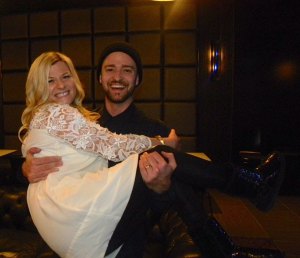
 La version française suit.
La version française suit.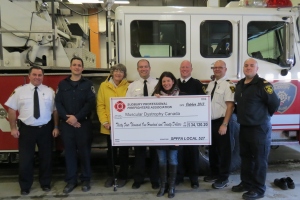
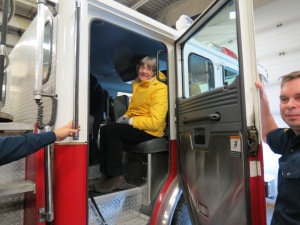 Kathy says, “From the extensive tour of the station, to the company of such thoughtful individuals who give so freely to a cause they believe in, to the honour of breaking bread with such special people, to my privileged ride on the most mammoth piece of equipment, I’ve ever ridden in, to the totally unexpected gift of the magnificent flowers and the very touching greeting card– my word, how special you all made this woman feel yesterday!
Kathy says, “From the extensive tour of the station, to the company of such thoughtful individuals who give so freely to a cause they believe in, to the honour of breaking bread with such special people, to my privileged ride on the most mammoth piece of equipment, I’ve ever ridden in, to the totally unexpected gift of the magnificent flowers and the very touching greeting card– my word, how special you all made this woman feel yesterday! Scott Roper, the Muscular Dystrophy Canada Chairperson for Sudbury PFFA responded to Kathy by saying, “ You are most welcome and it was nice to have finally met you. Thursday was just a small token to what you have given back to this community over the last few years and for that, we are thankful for it. I was saying to my wife the other night, seeing you on Thursday and watching how happy you were, makes my decision 15 years ago to become a Fire Fighter, worth every penny and heartache to achieve my goal. Helping out in the community is the most beneficial part of our job and I wouldn’t trade it for anything.
Scott Roper, the Muscular Dystrophy Canada Chairperson for Sudbury PFFA responded to Kathy by saying, “ You are most welcome and it was nice to have finally met you. Thursday was just a small token to what you have given back to this community over the last few years and for that, we are thankful for it. I was saying to my wife the other night, seeing you on Thursday and watching how happy you were, makes my decision 15 years ago to become a Fire Fighter, worth every penny and heartache to achieve my goal. Helping out in the community is the most beneficial part of our job and I wouldn’t trade it for anything.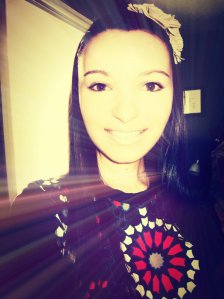

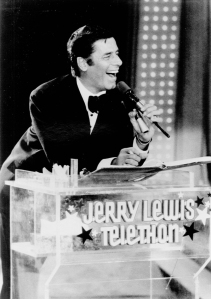 La version française suit.
La version française suit.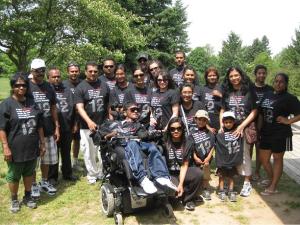
 I recently watched an interview with Diane Sawyer and I really liked a piece of advice her father gave her. He said, “Do what you love, do it in the most adventurous place, and make sure it helps people.” I had a previous blog that was all about the importance of being more involved and helping as much as you can. Now, I am hoping to cover the adventurous part of Diane Sawyer’s father’s advice.
I recently watched an interview with Diane Sawyer and I really liked a piece of advice her father gave her. He said, “Do what you love, do it in the most adventurous place, and make sure it helps people.” I had a previous blog that was all about the importance of being more involved and helping as much as you can. Now, I am hoping to cover the adventurous part of Diane Sawyer’s father’s advice.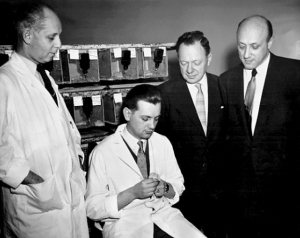 In order for any organization to be formed, there must be a need. To be successful in filling the need, the organization must have strong leadership, and clear goals, in addition to a fueling passion. All of these apply to the forming of The Muscular Dystrophy Association of Canada (renamed Muscular Dystrophy Canada in 2003.)
In order for any organization to be formed, there must be a need. To be successful in filling the need, the organization must have strong leadership, and clear goals, in addition to a fueling passion. All of these apply to the forming of The Muscular Dystrophy Association of Canada (renamed Muscular Dystrophy Canada in 2003.)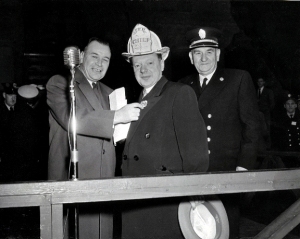 inception in 1954, through to the ten year anniversary in 1964. He brought Canadian Fire Fighters on board with our mission. Fire Fighters have remained our number one supporters through all our 60 years. Mr. Minden was also instrumental in connecting Jerry Lewis to the Canadian Association, paving the way for the Labour Day Telethon to be broadcasted in Canada. Mr. Minden became Chairman of the Board until his passing in 1966.
inception in 1954, through to the ten year anniversary in 1964. He brought Canadian Fire Fighters on board with our mission. Fire Fighters have remained our number one supporters through all our 60 years. Mr. Minden was also instrumental in connecting Jerry Lewis to the Canadian Association, paving the way for the Labour Day Telethon to be broadcasted in Canada. Mr. Minden became Chairman of the Board until his passing in 1966.